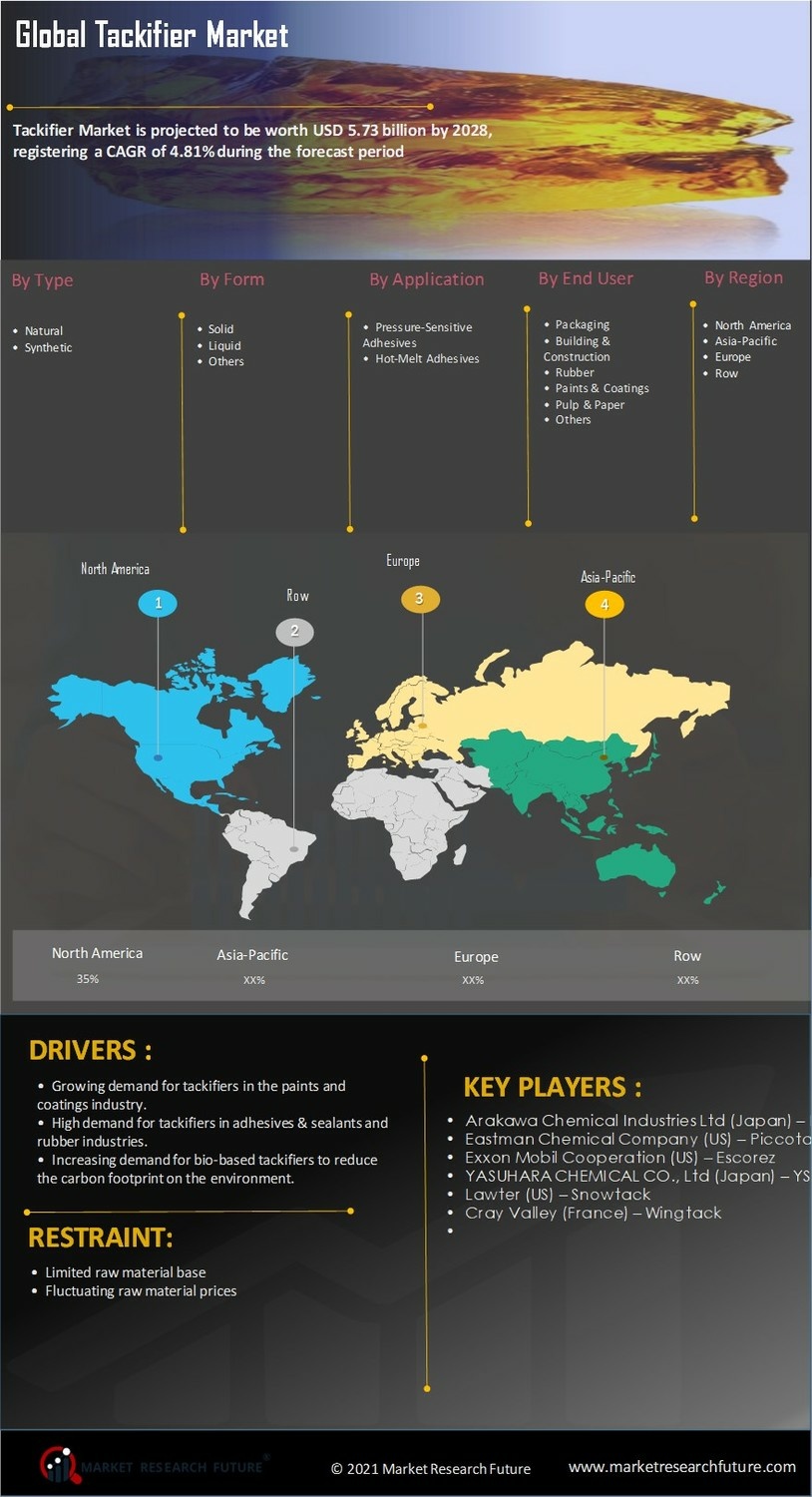Leading market players are investing heavily in research and development in order to expand their product lines, which will help the tackifier market, grow even more. Market participants are also undertaking a variety of strategic activities to expand their footprint, with important market developments including new product launches, contractual agreements, mergers and acquisitions, higher investments, and collaboration with other organizations. To expand and survive in a more competitive and rising market climate, tackifier industry must offer cost-effective items.
Manufacturing locally to minimize operational costs is one of the key business tactics used by manufacturers in the tackifier industry to benefit clients and increase the market sector. In recent years, the tackifier industry has offered some of the most significant advantages to market. Major players in the tackifier market attempting to increase market demand by investing in research and development operations include Arakawa Chemical Industries Ltd (Japan), Eastman Chemical Company (US), Exxon Mobil Cooperation (US), YASUHARA CHEMICAL CO.
Ltd (Japan), Lawter (US), Cray Valley (France), ZEON CORPORATION (Japan), Kolon Industries Inc. (South Korea), SOLTEX (US), Foreverest Resources Ltd (China), Neville (US), Robert Kraemer GmbH & Co. KG (Germany), BASF SE (Germany), Anglxxon Chemical (China), KRATON CORPORATION (US) and LESCO CHEMICAL LIMITED (China).
Specialty chemical producers and suppliers include Eastman Chemical Co. It offers a vast array of cutting-edge materials, functional goods, specialized additives, chemicals, and fibers. Acetate yarn, specialized plastics, adhesives, performance films, chemical intermediates, and other goods are all part of its product portfolio. Wet-laid nonwovens and specialty films are also available from the company. In addition to other industries, Eastman's products are used in coatings, food and beverage, feed and agriculture, building and construction, packaging, transportation, consumables, consumer durables, and health and wellness.
Exxon Mobil Corp. is an integrated oil and gas business that searches for, develops, and produces natural gas, crude oil, and natural gas liquids. In addition to manufacturing lube base stocks and finished lubricants, it transports, trades, and distributes petroleum products in addition to carrying out crude oil refining. Along with producing and selling niche goods, ExxonMobil also produces and sells a number of commodity petrochemicals, such as olefins, aromatics, polyethylene, and polypropylene plastics.


















Leave a Comment